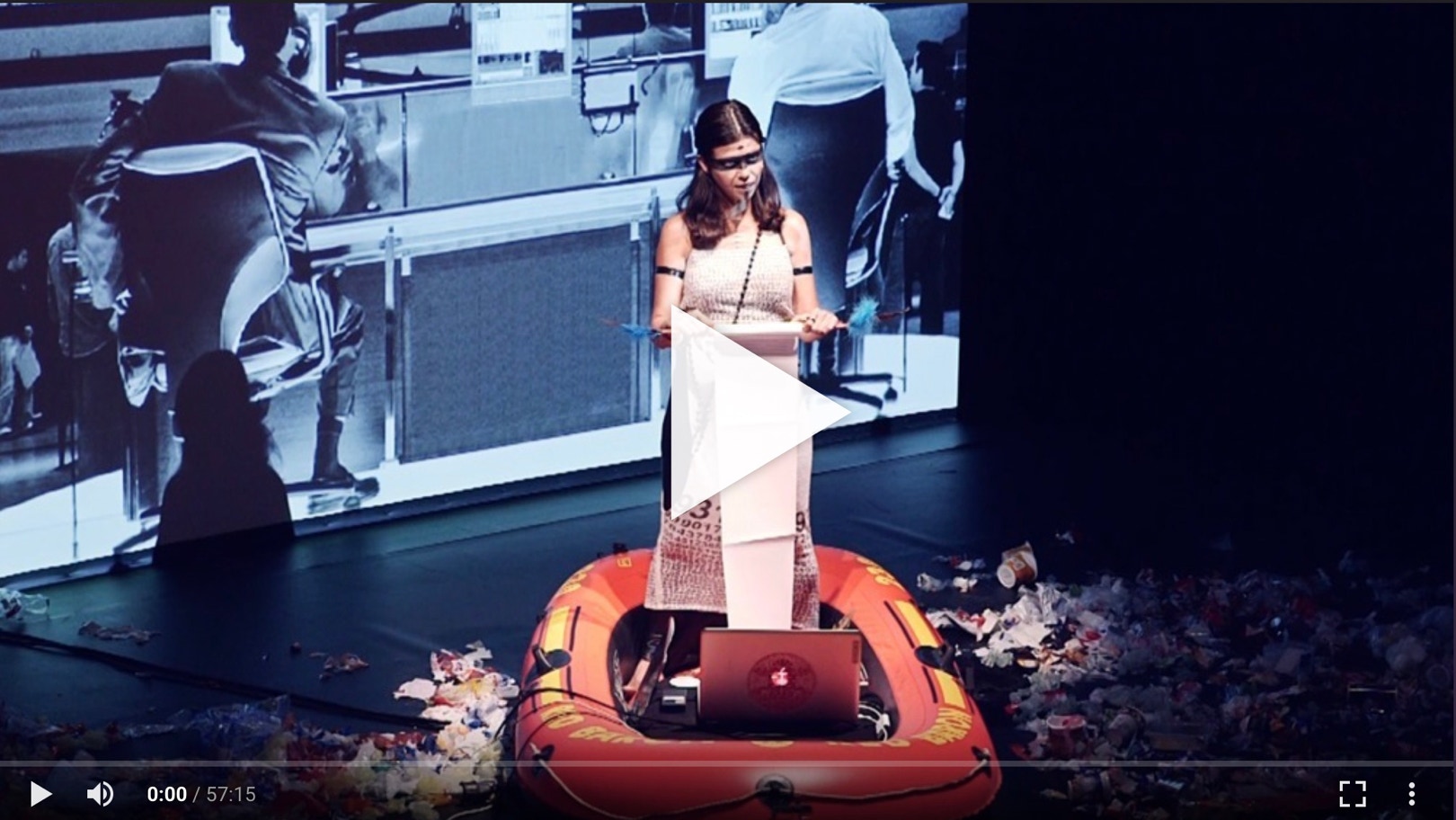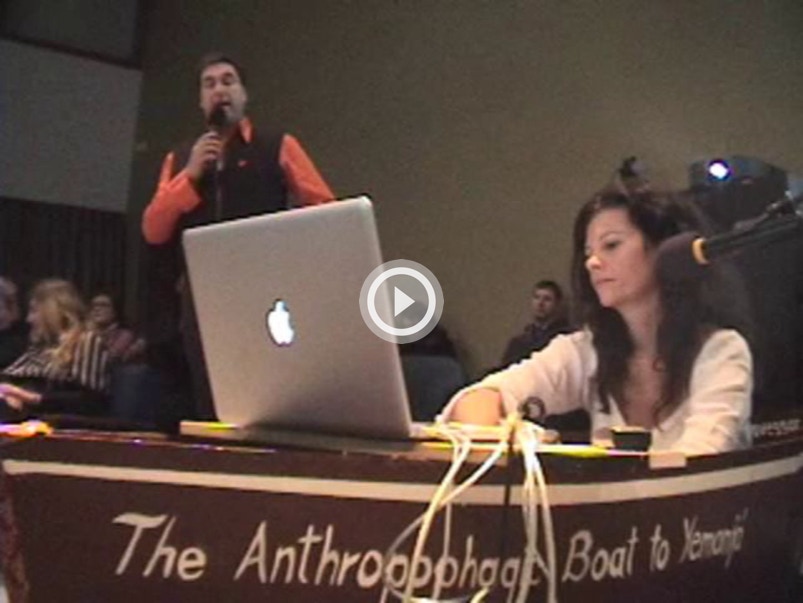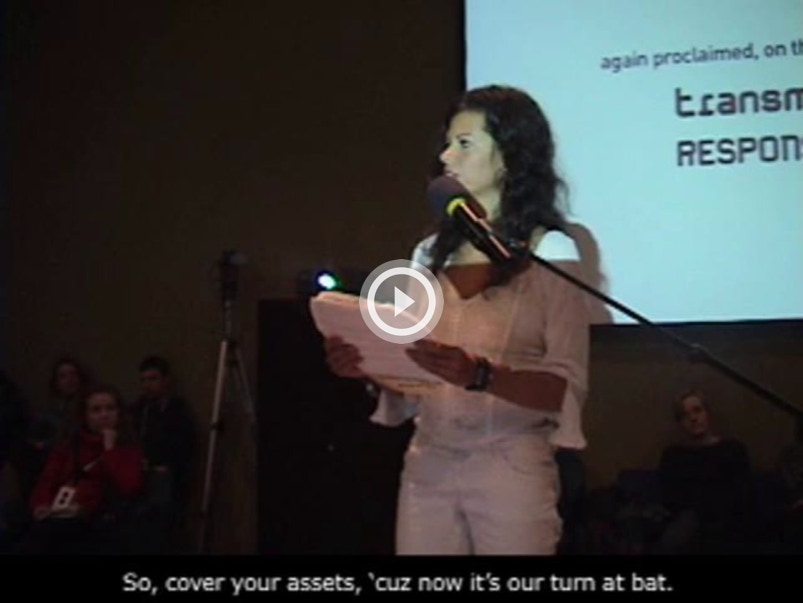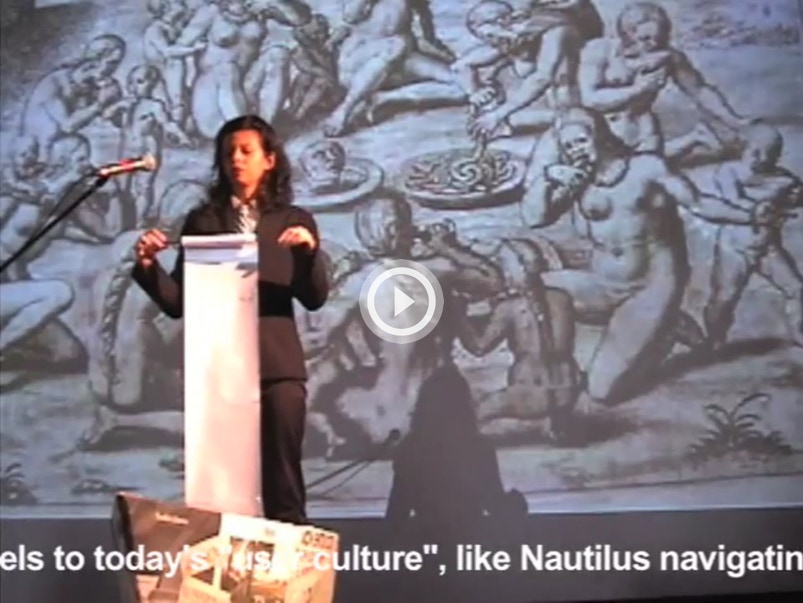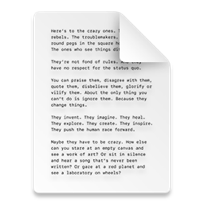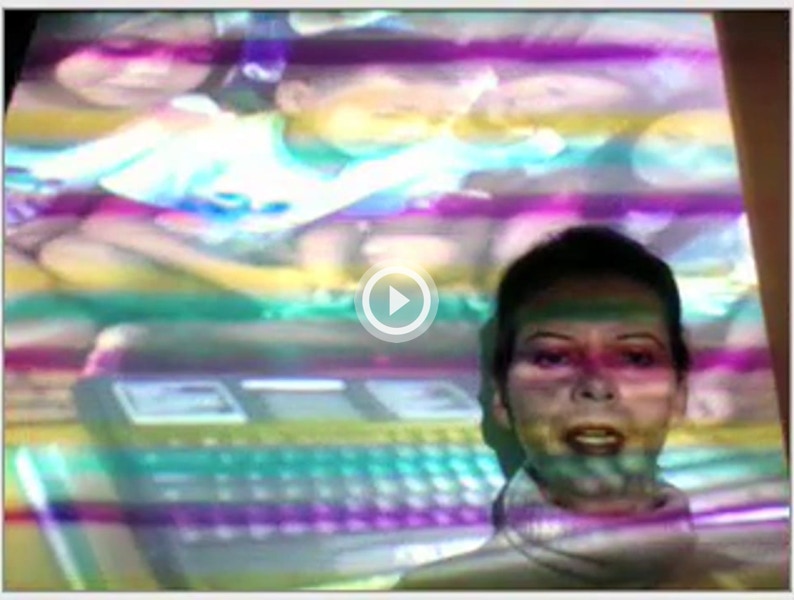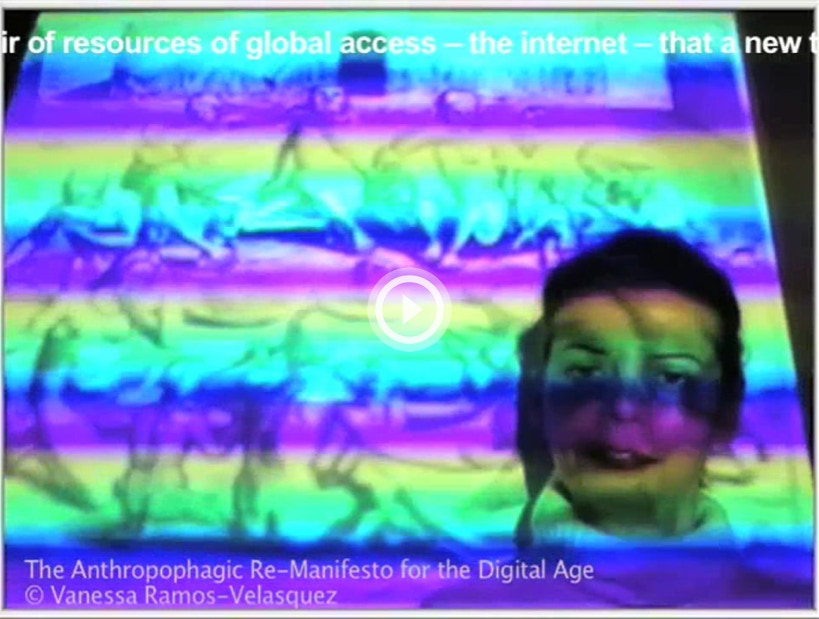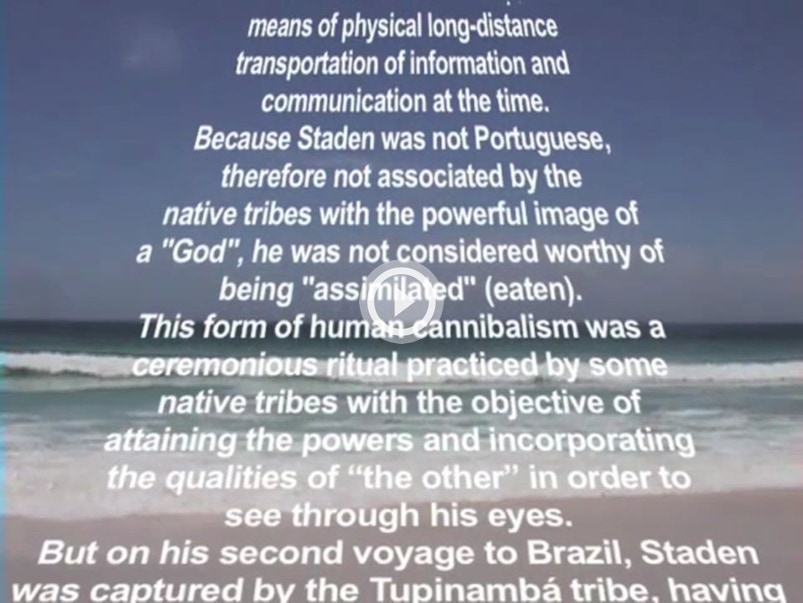DIGITAL ANTHROPOPHAGY AND THE ANTHROPOPHAGIC RE-MANIFESTO FOR THE DIGITAL AGE (2010–2016)
Lecture-Performance with publication of text on event proceedings, catalogues, scientific journals and books.
Winner of the Vilém Flusser Theory Award Distinction - Transmediale.11
DIGITALE ANTHROPOPHAGIE UND DAS ANTHROPOPHAGISCHE RE-MANIFEST FÜR DAS DIGITALE ZEITALTER. 2016 at Kultursymposium Weimar.
The work is comprised of a theoretical essay where I propose a new practice of consumption (ingestion, digestion and excretion) involving a technological mediation. It contains a manifesto-poem with a new take on the original Manifesto Antropófago written by the Brazilian modernist author Oswald de Andrade in 1928. His manifesto was an assertion of the unique Brazilian voice in the emerging modern time, away from clichés of colonialism, while unapologetically metabolizing outside references from the First World. My reflexion seeks to update that anthropophagous practice to the digital age, where the virtual world is the new frontier and anyone can be a colonizer. Lately, the work has evolved to consider how Anthropopahgy is a devouring of the earth by Capitalocene forces. This was reflected in the most recent performance (above image) in 2016 at Kultursymposium Weimar The Sharing Game. Exchange in Culture and Society, where the boat (a recurring protagonist in the staged work) becomes a refugee raft among a sea of garbage). This work was initiated in May 2009 and completed in July 2010. But as the work itself is anthropophagic in nature, it morphs and acquires new insights depending on the context of where and when the performance is presented.
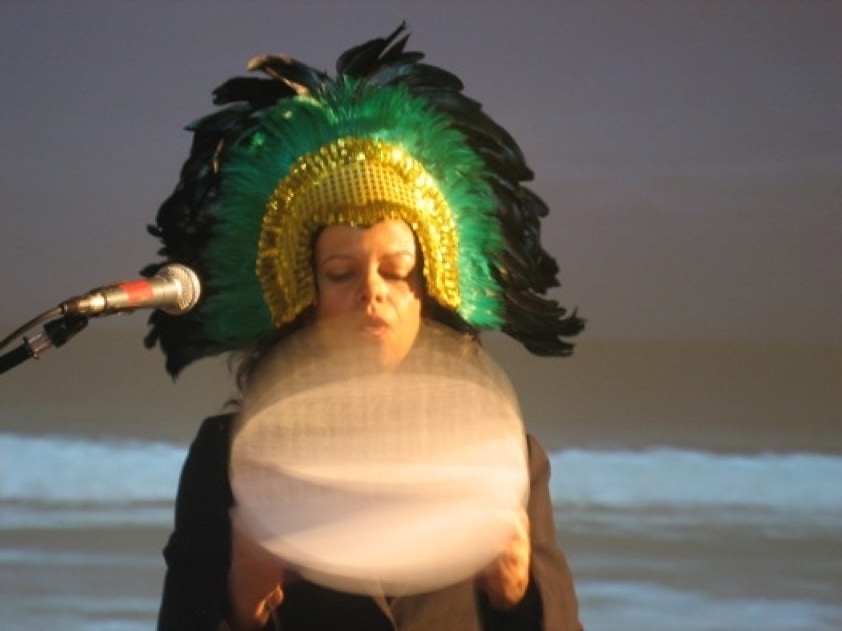
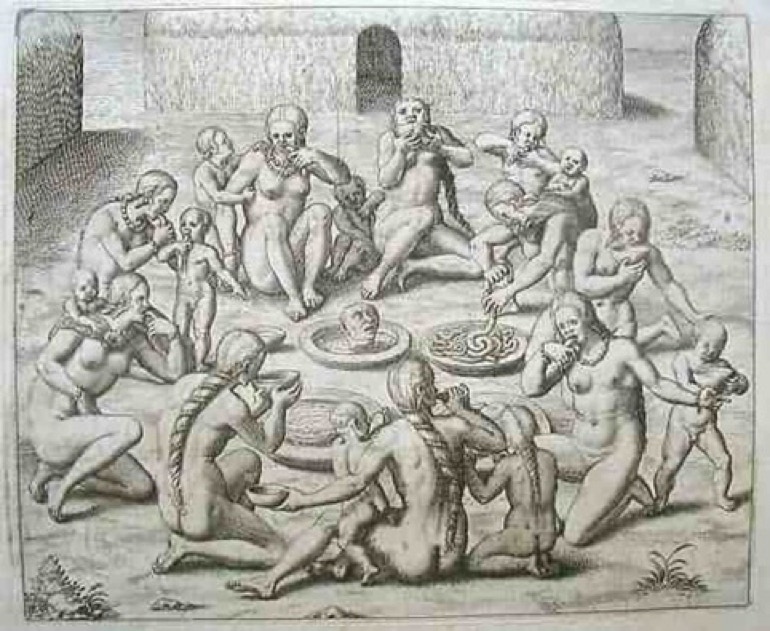
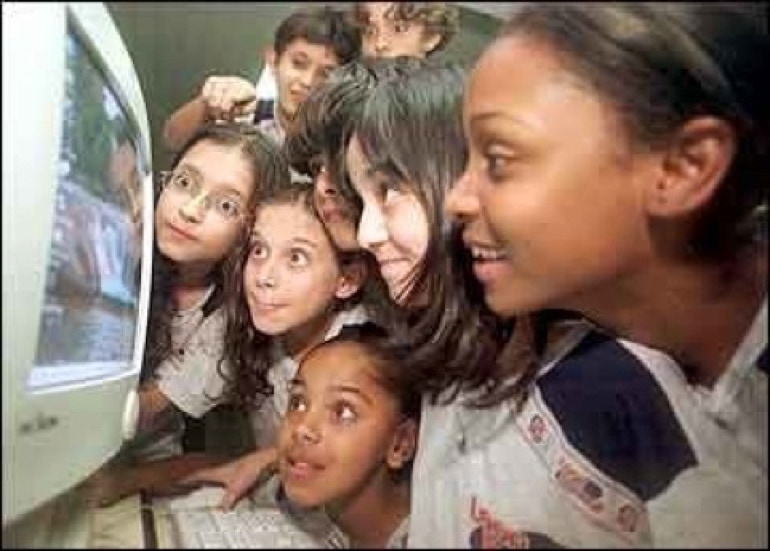

Above: at Emergeandsee conference 2012.
Below: the performance-lecture premiered at ISEA2010/RUHR in Dortmund,
E-Culture Conference section: Cyborgs and Transhumans. 24.8.2010, manifesto read, eaten, and shared with audience members.
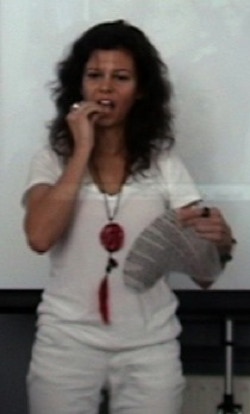
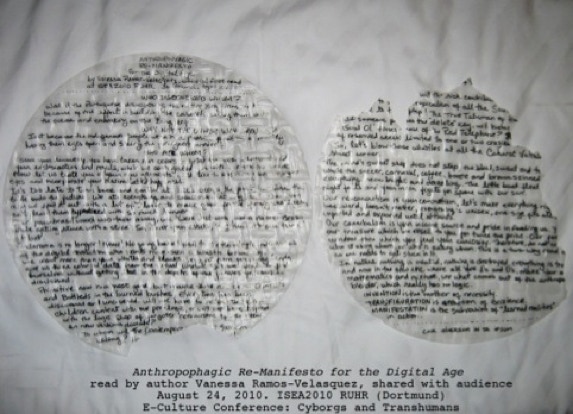
transmediale.11 2.2.2011. Haus der Kulturen der Welt, Berlin.
At transmediale.11 (photos below) the performance was adapted to the specific date of presentation – as February 2 is the day of the Afrobrazilian deity Yemanjá, I dedicated my presentation to the Yorubá Goddess of the Seas, because this deity is herself a result of a cultural remix of African, Amerindian, and European elements. So I built a boat (symbolic of making offerings to Iemanjá) in which I read my Digital Anthropophagy theory and recited my Anthropophagic Re-Manifesto for the Digital Age. When I finished the reading, I ate a piece of the manifesto and shared it as an ”eucharist” with the audience. Then I invited the audience to deposit offerings in the Anthropophagic Boat to Iemanjá. Following, I called up a spiritual center of the Yorubá religion in Brazil via Skype to ask for their blessing before sending the boat in the virtual sea (video projection of the ocean recorded in Rio de Janeiro). The performance ended with a Q&A session with the audience while the boat “sailed” through the turbulent waters of cultural cannibalism.
Two images morph during the 25-minute lecture. The cannibals portrayed by Theodor de Bry for the books by Hans Staden in the 1500’s and the new fine young cannibals at the computer.
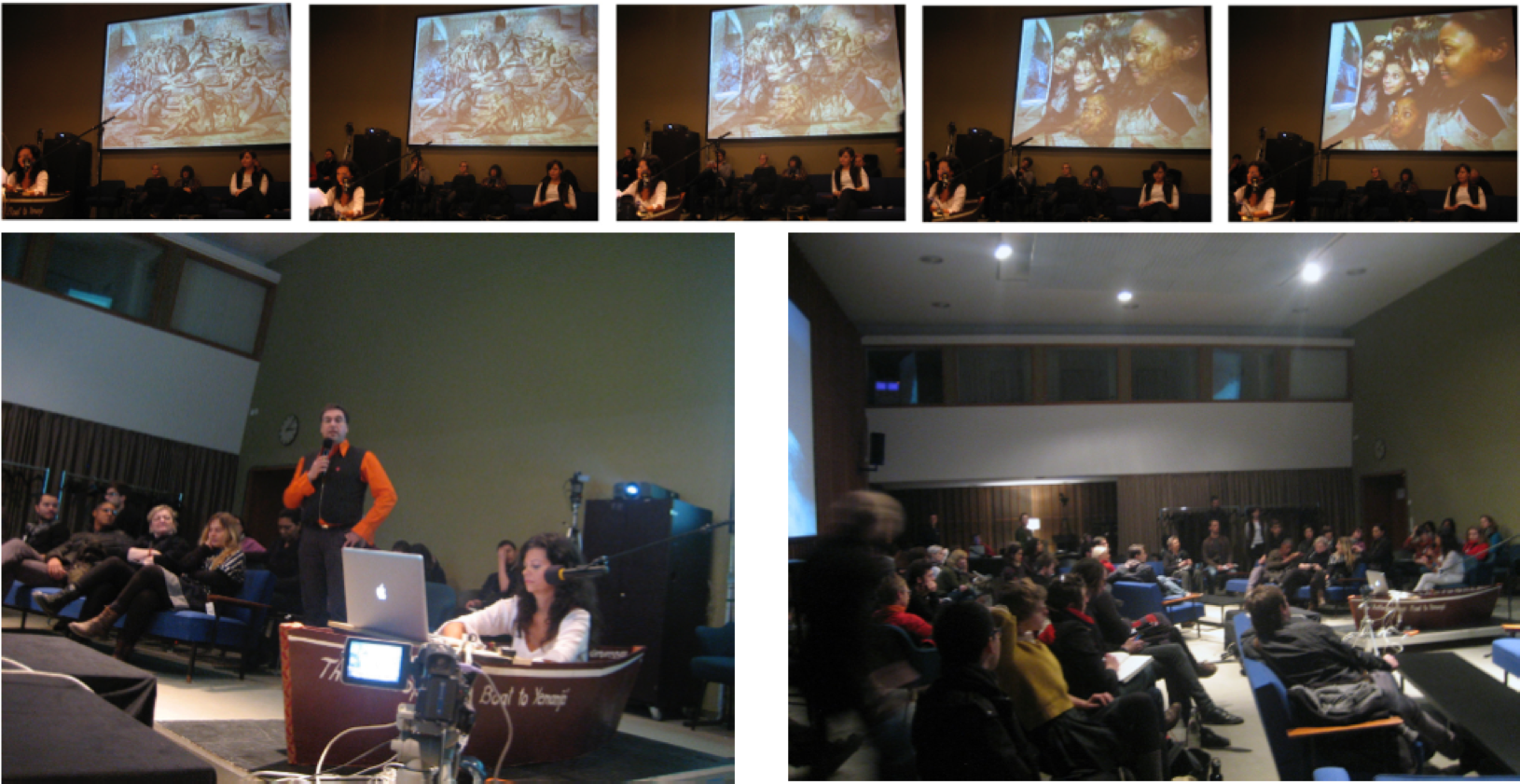
Stephen Kovats, Artistic Director of transmediale.11 introduces the presentation. A Q&A session followed at the end.
Above: Webcast from transmediale.11 and project page: http://www.transmediale.de/content/digital-anthropophagy-and-anthropophagic-re-manifesto-digital-age-presentation
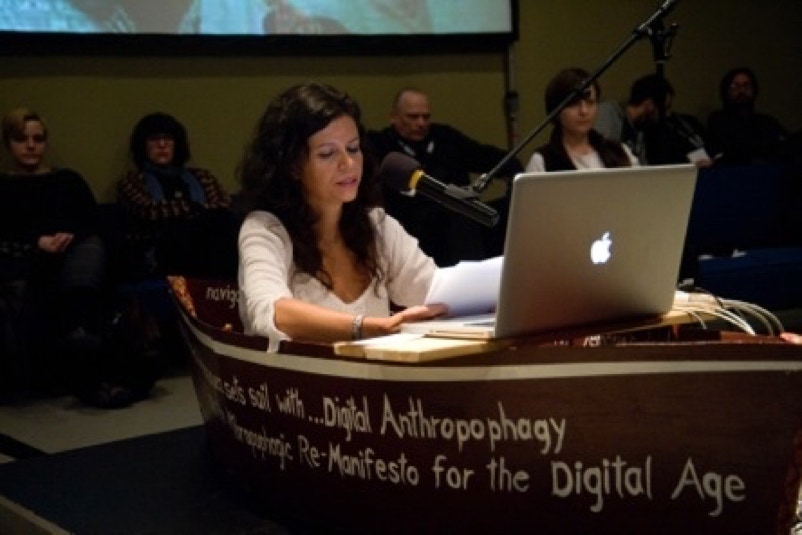
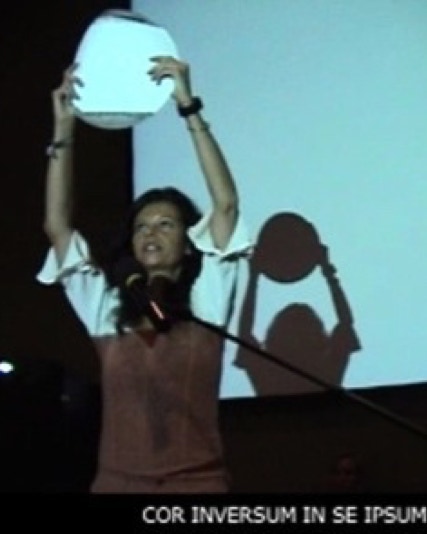
The reading of The Anthropophagic Re-Manifesto for the Digital Age ends with a proclamation in latin “Cor inversum in se ipsum.” According to philosopher Vilém Flusser, it means the gesture inverted against itself, a deprogramming gesture against the programmed. In my view it is also a decolonizing gesture: to turn against the creator.
After the eating of the manifesto as a ritual eucharist, comes its sharing with the audience, scored by a musical remix of Indigenous chanting, followed by berimbau instrumentation over the Portuguese fado “Abandonment” by Amalia Rodrigues, a syncretic soundtrack for the proceedings.
Inscriptions painted on the boat: Vanessa Ramos-Velasquez sets sail with Digital Anthropophagy and The Anthropophagic Re-Manifesto for the Digital Age.
On the inside: The Anthropophagic Boat to Iemanjá. Navigating virtually from Transmediale on February 2, 2011. Berlin, Germany. Iemanjá, mother mermaid queen of the sea, the waves so high, give me your hand to help me cross it.
The closing ritual at the end of my performance: I invited the audience members to place offerings in the Anthropophagic Boat to Iemanjá. My own offerings: antique catechism book, Brazilian Cruzeiros money bill imprinted “United States of Brazil”, the Lord of Bonfim ribbons bearing my wishes of protection for my micro-chips. Also a compass and a map tracing a triangle formed by the places where I have lived, Rio de Janeiro, Kansas, New York, Berlin.
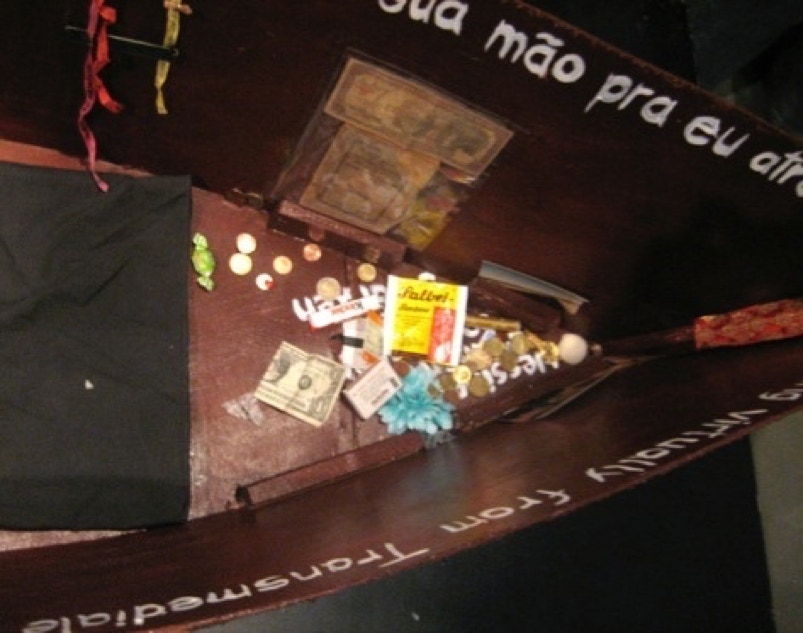
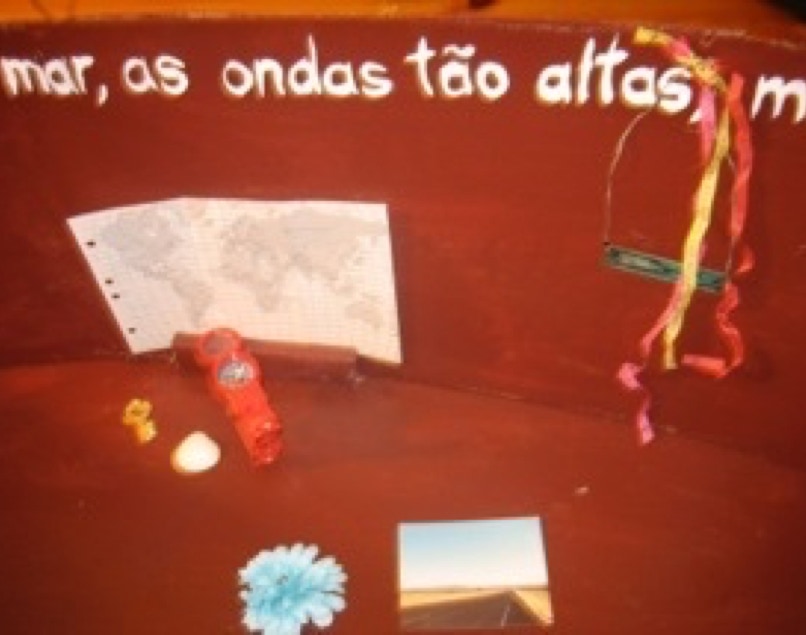
At Emergeandsee Media Arts Festival, 2012, Berlin, I covered my boat with German newspapers and read Digital Anthropophagy as an “El Requerimiento”.
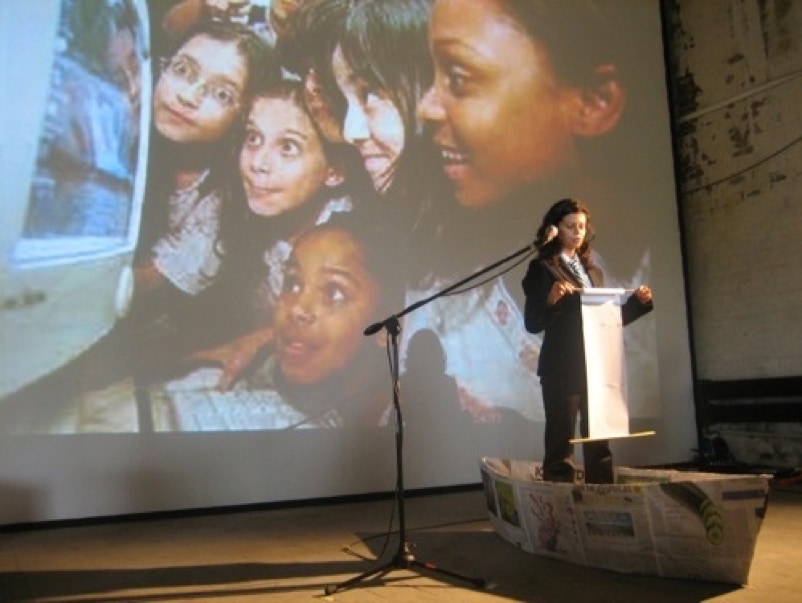
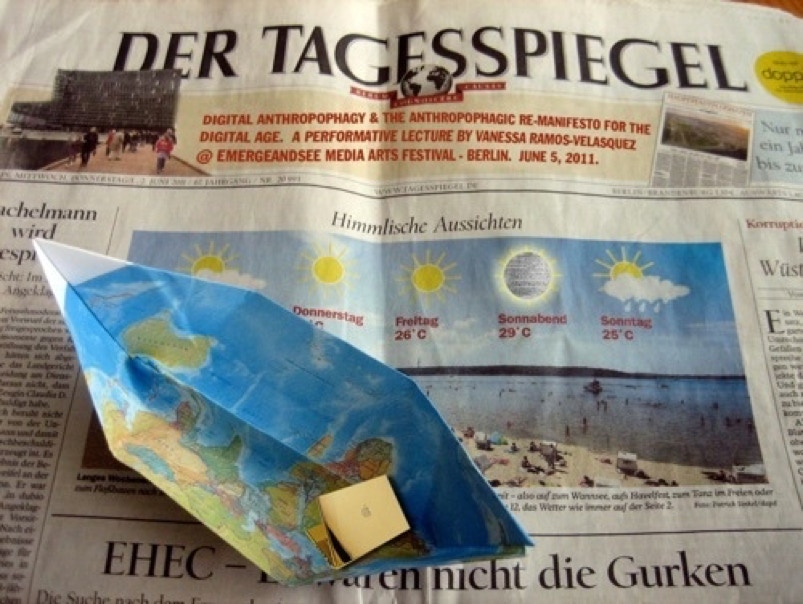
The performance acquired yet additional local flavors.
Below, postcards for the performance at ISEA2011/Istanbul; Moscow Biennale’s Pro&Contra Symposium; Bergen Academy of Art and Design, Norway; as well as in the performances via skype from Berlin to symposia and exhibits in Brazil, such as ABCiber Symposium and Exhibit 2011.
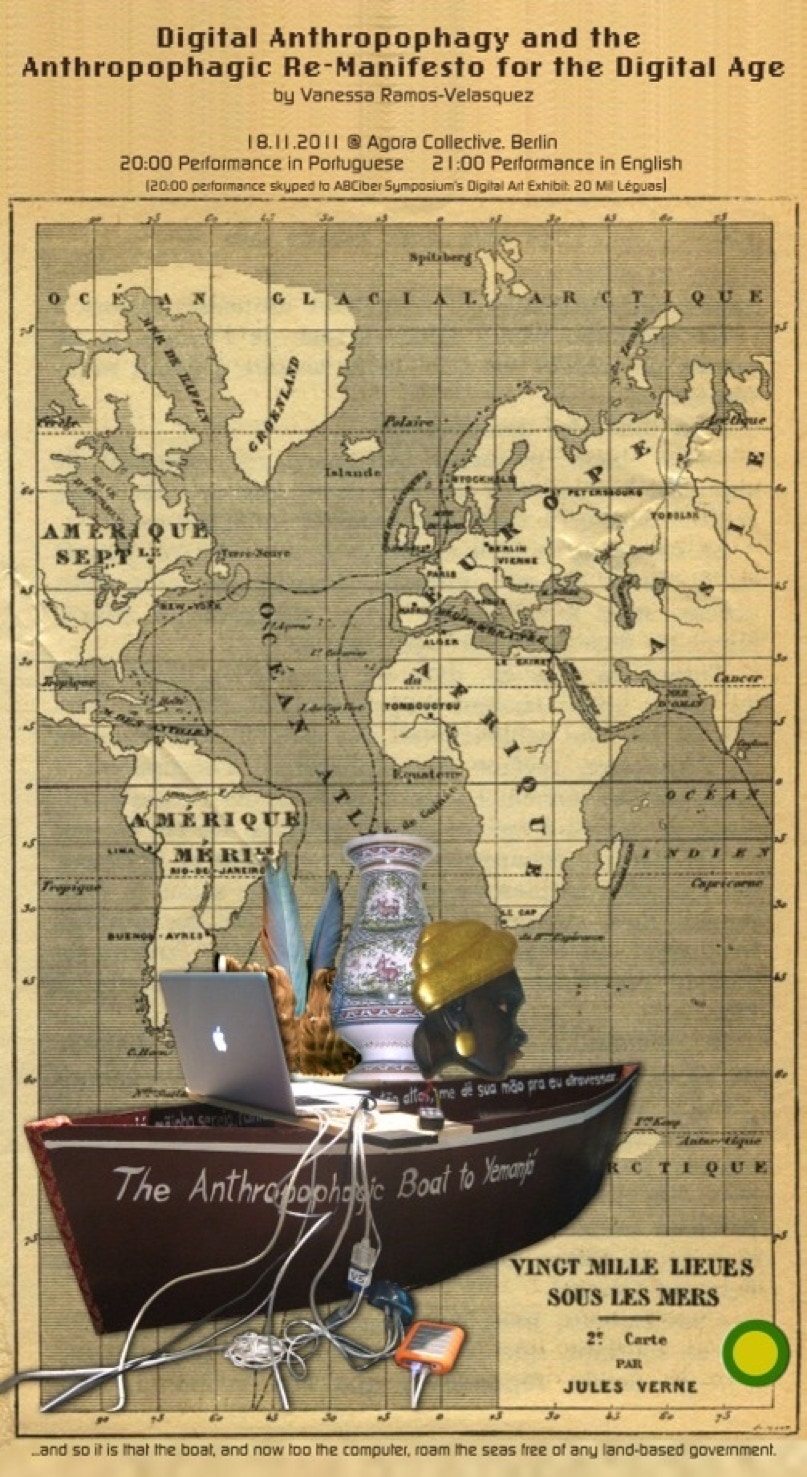
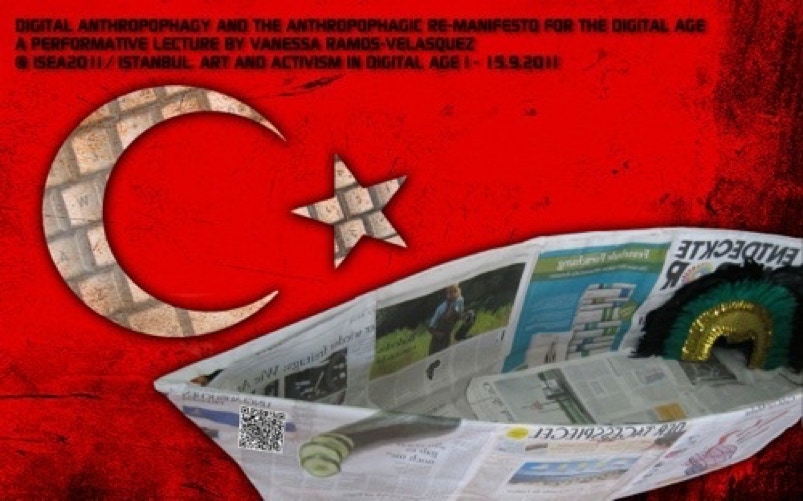
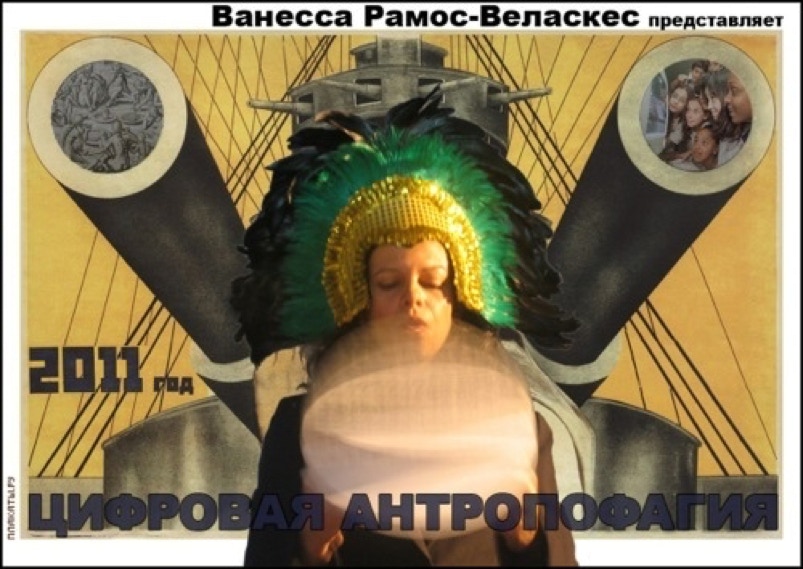
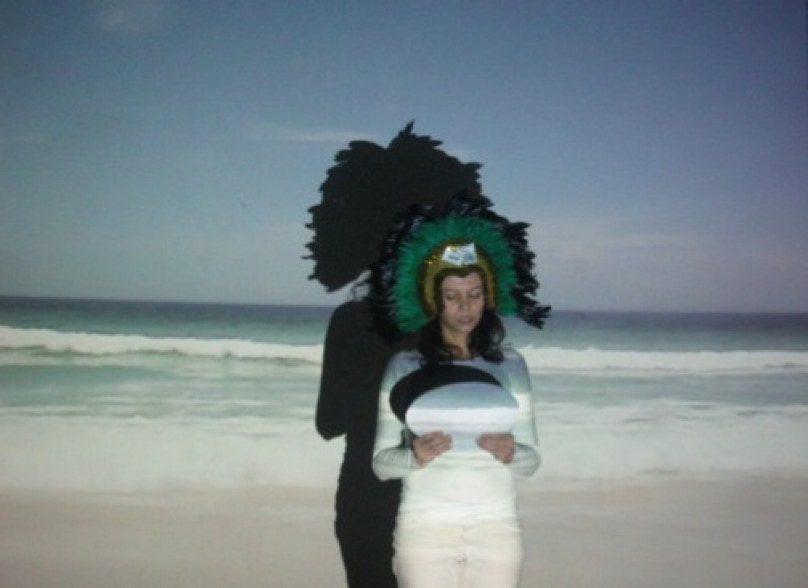
Performance from Berlin (Agora Art Space), via Skype to ABCiber Symposium, Brazil.
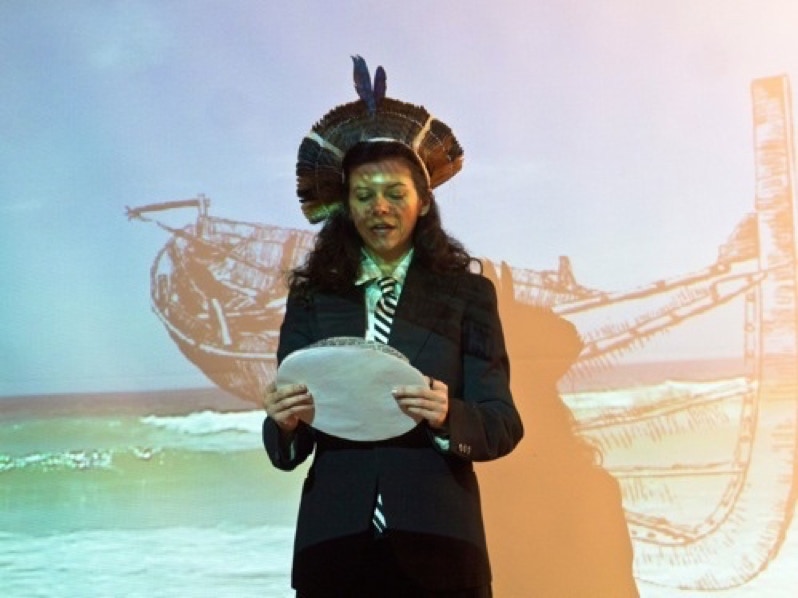
Performance in Norway with a Viking ship as the cultural vessel

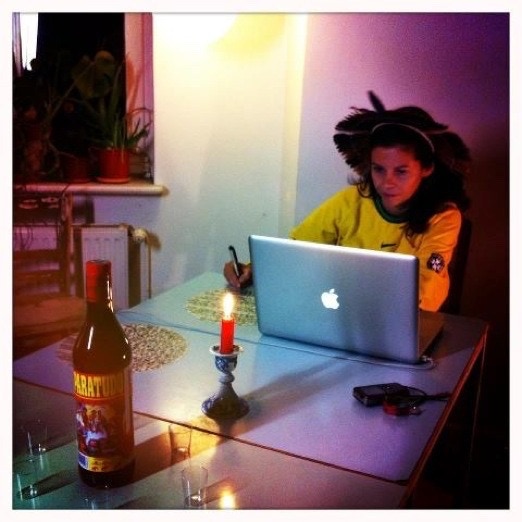
For my telepresence performance for the International Congress Image Imagination Fantasy: 20 Years Without Vilém Flusser, my performance remixed various historical elements into a literal stew as homage to the philosopher. The background for this remix comes from 1989, when Vilém Flusser organized the project New Colours Dinner at Casa da Cor in São Paulo, Brazil. Artist Eduardo Katz was at least familiar with the project at the time and was arguably inspired by one of the dinner recipes featuring a “non-conforming” rabbit for his genetically modified "glowing" rabbit Alba.
My telecast was introduced as such to the attendees: “Interferenz... You are cordially invited to tomorrow's (20.10.2011) online ritualistic reading of the Anthropophagic Re-Manifesto for the Digital Age... You shall be served a symbolic Anthropophagic Flusserian stew of purple mushrooms over Eduardo Kac's Flusserian fluorescent bunny, skyped to “Image-Imagination-Fantasy: 20 Years without Vilém Flusser” International Congress.
>>>SkypeCall in to user name: iamquietrevolution
between 16:15 and 16:25 punctually in order to be added to call before skype performance starts at 16:30 (Brazil time zone). Berlin local time = 20:30.
>>>You must remain silent during the ceremony. You may cook your own purple mushrooms. You may make your own purple drink. You may create your own rabbit. You may eat your own words.”
Above: Performance by telepresence to Rádio Mínima, Rio Grande do Sul, Brazil.
Below: Performance by telepresence to the International Congress Image, Imagination, Fantasy: 20 Years without Vilém Flusser, Ouro Preto, Minas Gerais, Brazil (via skype from Berlin).
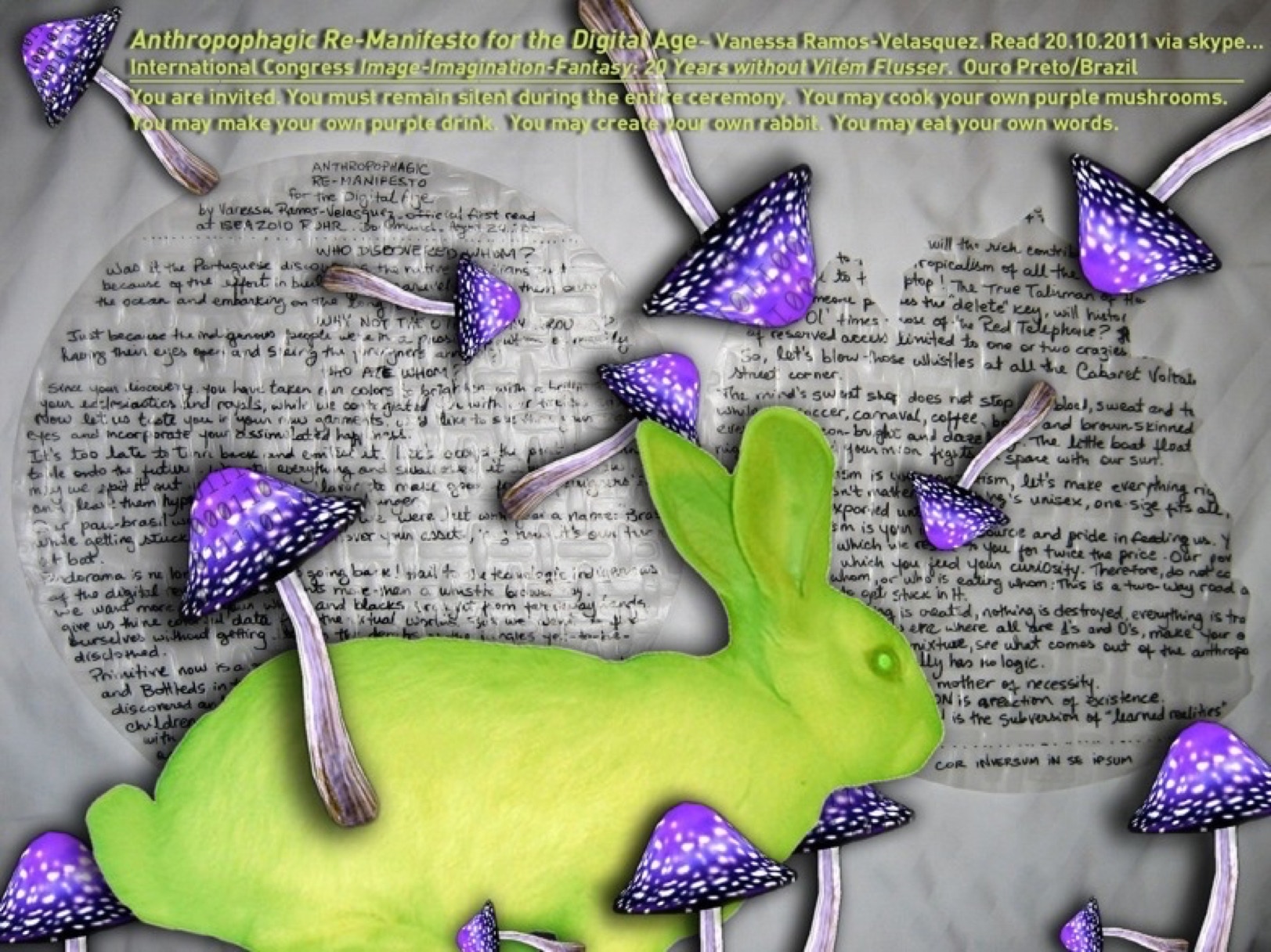
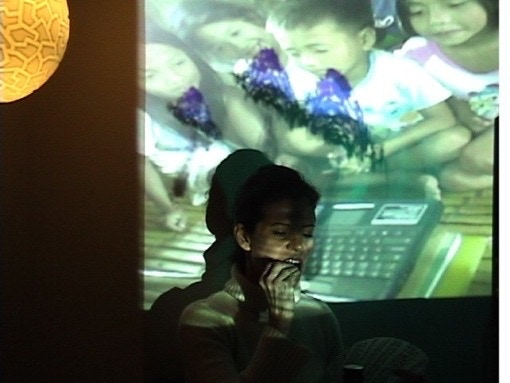
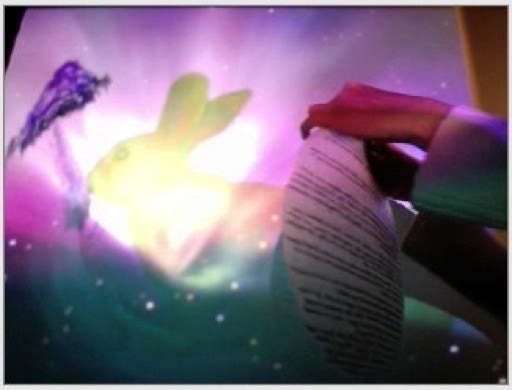
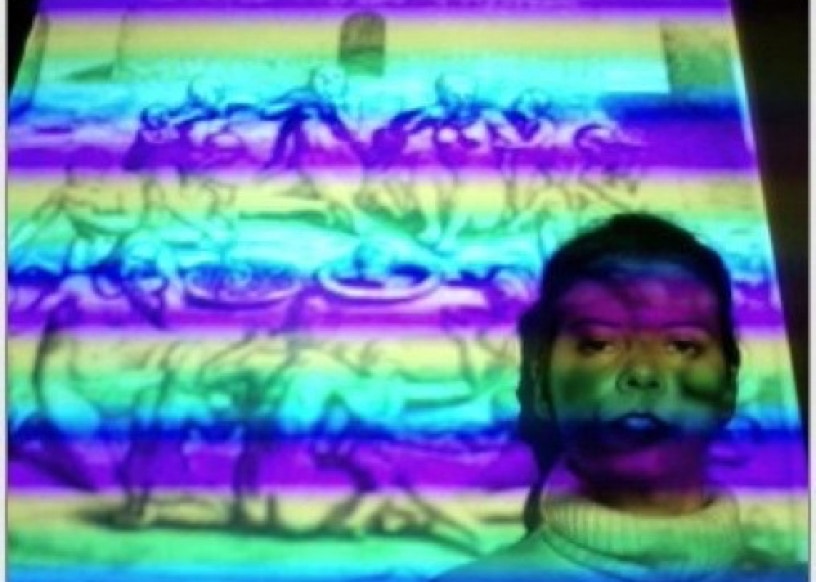
For the reading and sharing of the Re-Manifesto at Nuvem Residency, Mauá, Rio de Janeiro, the residency’s theme of technoshamanism inspired a group search for the Yupana Tree, and a tea infusion of herbs from the location for the ritualistic sharing of the manifesto, was made possible by telepresence (via skype from Berlin).
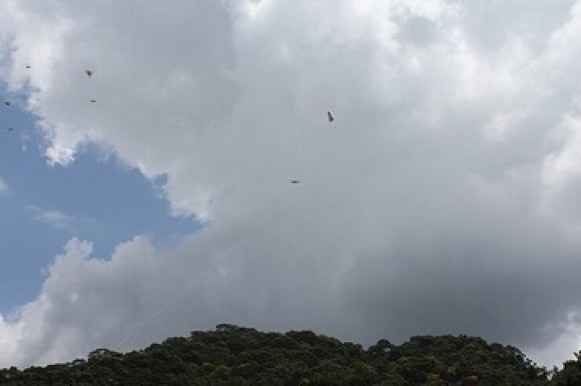
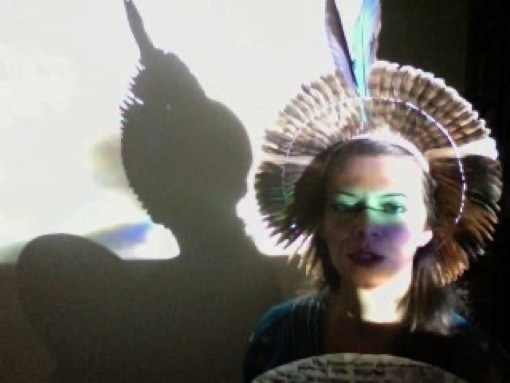
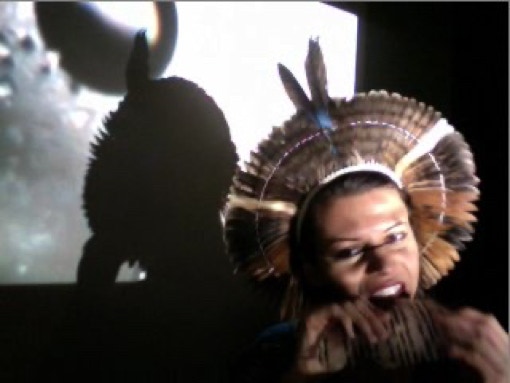
Tupi-or-not-Tupi Digitalis: sófitiuér, rardiuér, api/dáungrêidi,
daunlôudi, apilôudi, lóguin, lógáuti, onláini, ófiláini, imêiol,
inbóksi, autibóksi, uébissáiti, rolmipêigi, línki, xétirum,
xípi, lépitópi, uindôus, méki, épol, aipódi, aifôni,
páuerbúki,aibúki, aipédi, aitúnis, cuikitáimi,
fotoxópi, uôrdi, páuerpointi, iscáipi, gúgol,
gúgol ârfi, faierfóxi, maispêici, iútúbi,
feicibúki, instagrã, tuíter, úiquipédia, giáva,
piêidipí, rúbionreiús, uôrdipréssi
At International Congress Vom Begriff zum Bild: Medienkultur nach Vilém Flusser (Do Conceito à Imagem. A Cultura da Mídia pós-Vilém Flusser)
Simpósio Internacional de Estudos sobre Cultura Midiática at Universidade Federal do Rio Grande do Norte, Brazil co-organized with Freie Universität Berlin. 12/2012.
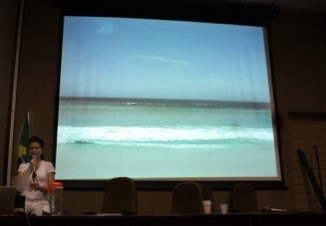
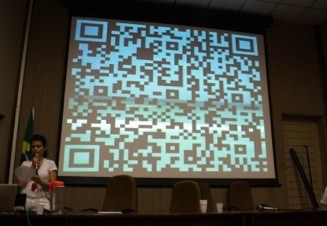
Digital Anthropophagy and the Anthropophagic Re-Manifesto for the Digital Age has been published on:
– Referenced in Medienästhetik und Alltagswelt: Studien zur Mediatisierung, Oliver Bidlo. Imprint: Oldib Verlag, Essen. Pub. date: 2019. 2012. ISBN: 978-3-939556-61-9
– Scientific journal from conference proceedings, conference catalogue in Portuguese language: Do conceito à imagem: a cultura da mídia pós-Vilém Flusser. Organizers: Michael Hanke, Élmano Ricarte. Natal, 2015: EDUFRN - Livros digitais. ISBN: 978-85-425-0416-3.
– Vasa Journal on Images and Culture #4, Pub. date 25.9.13 http://vjic.org/vjic2/?page_id=2574
– Intercreate Research Center/Intercreate.org (Art, Science, Technology and Cultural Bridging) – SCANZ 2013 3rd Nature International Conference: https://www.intercreate.org/scanz2013digital-anthropophagy/
– ISEA2012/Albuquerque: https://www.isea-archives.org/docs/2012/proceedings/ISEA2012_proceedings.pdf
– ISEA2011/Istanbul: https://www.isea-archives.org/symposia/isea2011-presentations-ramos-velasquez/
– ISEA2010/RUHR: abstract in conference catalogue.
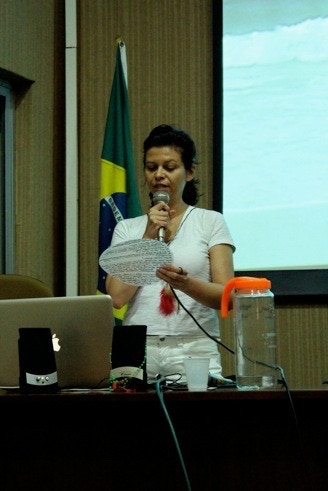
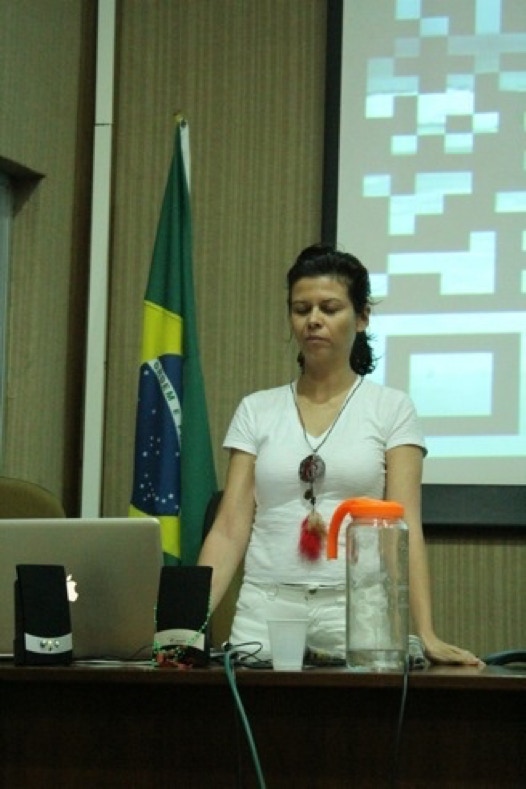
Below left: Video created specially for the online publication Journal on Images and Culture #4: http://vjic.org/vjic2/?page_id=2574
Below right: Video excerpt/montage of telepresence performance from Berlin to Brazil’s International Congress Image, Imagination, Fantasy: 20 Years without Vilém Flusser, edited specially for the above publication.



